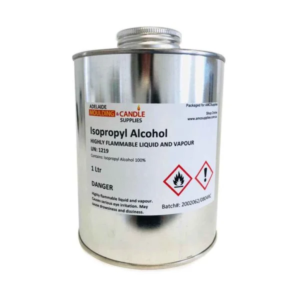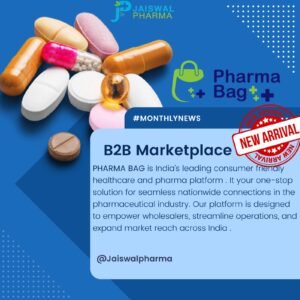Introduction:
Value Added Tax, or VAT is a form of consumption tax applied at each stage of the supply chain where value is added to goods and services. Unlike sales tax, which is only collected at the final point of sale, VAT is collected throughout the entire production and distribution process. Each business along the supply chain charges VAT to its customers and also pays VAT on its purchases.
This system makes VAT an integral Value Added Tax part of economic policies in numerous countries around the world, contributing significantly to government revenue. The benefits and challenges associated with it, and provide some useful tips for compliance.
What is Value Added Tax (VAT)?
VAT is a tax on the value added to goods and services at each stage of production or distribution. The goal is to tax the incremental value each time a product is sold, ultimately reaching the final consumer. This means that at each stage—from the production of raw materials to the final retail sale—tax is calculated based on the value added at that particular point.
The process can be simplified as follows:
- Raw Material Stage: A supplier sells raw materials to a manufacturer, charging VAT.
- Manufacturing Stage: The manufacturer processes the raw materials into goods, adding value, and charges VAT to the distributor.
- Retail Stage: The retailer buys goods from the distributor and sells them to the final consumer, adding VAT to the sale.
Consumers ultimately bear the cost of VAT, as businesses collect it and remit it to the government while claiming credits for any VAT paid on their purchases.
How Does VAT Work?
To understand VAT, it’s essential to recognize two key components:
- Output VAT: This is the VAT a business charges on its sales.
- Input VAT: This is the VAT a business pays on its purchases.
Businesses remit to the government the difference between Output VAT and Input VAT. Here’s how this looks in practice:
Example:
- A manufacturer buys materials costing $100 with an added VAT of 10% ($10), so they pay $110 in total.
- They then sell the finished goods to a retailer for $200 plus 10% VAT ($20), totaling $220.
- The manufacturer has paid $10 in VAT on their purchases but charged $20 in VAT on their sales, meaning they remit the difference, $10, to the government.
This credit mechanism ensures that the VAT burden is carried forward until the final consumer, where the total amount of VAT has been paid on the entire value of the product.
Who Pays VAT and How Is It Collected?
While VAT is collected at each stage in the supply chain, it is ultimately the end consumer who bears the cost. The intermediate businesses act as VAT collectors on behalf of the government, charging VAT on their sales and receiving credits for the VAT they paid on purchases. Here’s a breakdown of who pays and collects VAT:
- Suppliers and Manufacturers: Charge VAT on raw materials or semi-finished products sold to manufacturers or distributors.
- Distributors and Retailers: Apply VAT to the sales price of products sold to the next link in the supply chain.
- End Consumers: Pay the cumulative VAT in the final retail price of goods or services.
Businesses are responsible for accurate VAT calculation, reporting, and remittance to the government. In most countries, they need to file VAT returns periodically, detailing VAT collected on sales and VAT paid on purchases.
Types of Goods and Services Subject to VAT
VAT usually applies to a broad range of goods and services, but there are some exceptions:
- Standard Rated: These include most goods and services and are taxed at the standard VAT rate.
- Reduced Rated: Certain essential items, such as food, medical supplies, or energy, may have a lower VAT rate to reduce the tax burden on necessary goods.
- Zero-Rated: Some goods and services are taxed at a 0% rate, meaning they are subject to VAT but the rate is zero. Exports and some food items commonly fall under this category.
- Exempt Goods and Services: Exempt items do not carry VAT, and businesses dealing in exempt goods or services cannot claim input VAT deductions on purchases related to these activities. Common examples include financial services, healthcare, and educational services.
Benefits of VAT
VAT has numerous benefits that contribute to its popularity among governments:
- Revenue Generation: VAT is one of the primary sources of government revenue. Its broad base and systematic collection make it an effective and relatively stable source of income.
- Reduces Tax Evasion: VAT’s multi-stage collection mechanism discourages tax evasion. Since each business claims input VAT credits, the entire supply chain provides a natural audit trail.
- Efficiency and Transparency: VAT is generally easier to administer than other forms of taxation, such as corporate income tax, as it relies on transactions documented in the business’s accounts.
- Promotes Savings and Investments: Since VAT is a consumption tax, it does not directly affect savings or investments, making it a neutral tax that encourages economic growth.
Challenges of VAT
While VAT has many benefits, it is not without its challenges:
- Administrative Burden for Small Businesses: Complying with VAT can be cumbersome, especially for smaller businesses that may lack the resources for proper bookkeeping and reporting.
- Regressive Impact: VAT is a consumption tax, meaning it affects lower-income individuals disproportionately. To mitigate this, many governments apply lower or zero rates to essential goods and services.
- Complexity for International Trade: VAT can complicate international trade as different countries have varying rates and regulations, and exporting businesses must comply with VAT rules in multiple jurisdictions.
- Risk of Fraud: Despite its design to reduce tax evasion, VAT systems can still be subject to fraud, such as carousel fraud, where goods are repeatedly imported and exported to claim input tax credits fraudulently.
VAT Compliance and Filing
Businesses need to register for VAT if their taxable turnover exceeds a specific threshold set by the government. Once registered, they are required to:
- Issue VAT Invoices: Each sale should include a VAT invoice showing the price before tax, VAT rate, and VAT amount.
- Maintain Accurate Records: VAT compliance requires detailed records of all transactions, including sales and purchase invoices.
- Submit VAT Returns: Periodic VAT returns must be submitted, usually quarterly or annually, detailing total sales, purchases, and the net VAT payable or refundable.
Failure to comply with VAT regulations can lead to fines and penalties, emphasizing the importance of accurate record-keeping and timely filing.
Tips for Managing VAT Effectively
Keep Organized Records: Ensure that all sales and purchase invoices are correctly recorded, as this simplifies VAT calculations and compliance.
Use Accounting Software: VAT-specific accounting software can automate calculations and generate accurate VAT returns, reducing administrative errors.
Seek Professional Advice: VAT laws can be complex, especially when dealing with multiple rates or cross-border transactions. Consulting a tax professional can help ensure compliance and minimize tax liability.
Understand Input VAT Deductions: Be aware of what input VAT you can claim back, especially for goods and services directly related to your business activities.
Conclusion
VAT plays a critical role in revenue generation for many governments worldwide, funding public services and infrastructure development. For businesses, understanding VAT obligations, managing compliance, and leveraging VAT deductions is essential for smooth operations and avoiding unnecessary costs. Despite its complexities, VAT’s advantages make it one of the most efficient and effective forms of taxation. By staying informed about the latest VAT regulations and employing sound VAT management practices, businesses can optimize their tax liabilities and contribute to a fair, functioning tax system.














